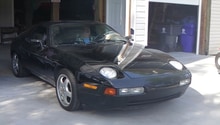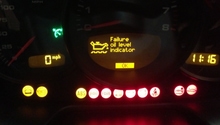Porsche 993: Why is My Car Idling Rough?
Diagnosing a rough idle on your Porsche 993 is no simple task, but following these steps will get to the bottom of it.
This article applies to the Porsche 993 (1993-1998).
If your Porsche 993 is having some rough idling issues, don't ignore them or listen to the advice of inexperienced or lazy mechanics who will tell you that the 993 normally does this. A myriad of issues can cause the 993 to idle rough. It certainly helps to identify exactly when the rough idle occurs. Does this just happen on cold starts, at low RPMs, or at higher RPMs? Does the problem go away when the A/C is turned on? There are so many things that can cause a rough idle that this symptom is very difficult to properly diagnose. The diagnosis can cost a small fortune because of the sheet time it takes to figure out what the problem is.
Along with this lengthy diagnosis, the professional mechanic may also just start throwing parts at it, hoping that one of them fixes it. Again, this turns out to be quite a costly endeavor and is made that much more painful if it ends up being a simple fix. You can do much of the leg work yourself and may even be able to replace some or all of the faulty parts as well, saving you a huge bundle of cash. Read on for some possibilities ranging from the simple to the more difficult. The last thing you want to do is start tearing out the engine if something simple such as a vacuum hose needs to be replaced.

Materials Needed (all optional)
- Phillips screwdriver
- Smoke machine/vacuum
- PB blaster or WD-40
- Vice grips
Step 1 – Check/replace air filter
The air filter is the first part of the intake system. It could be clogged or dirty.
- Pull the air filter out, check it for excessive dirt.
- Make sure the housing is clean.
- Check the intake hose for leaks.
(Related Article: Porsche 993: How to Replace Air Filter - Rennlist.com)
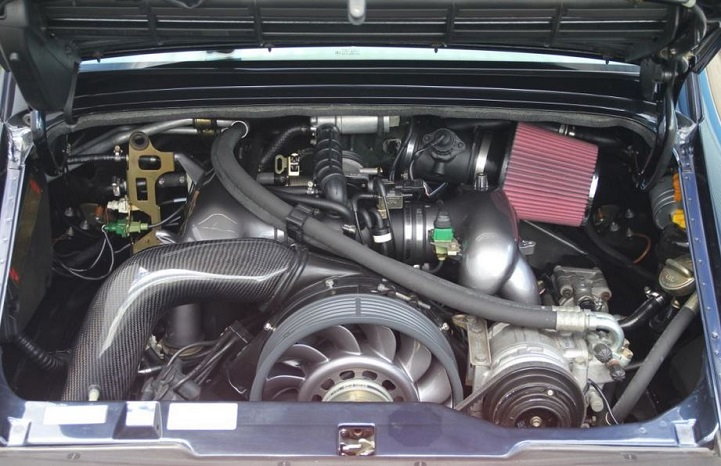
Pro Tip
If you are using an after market, high performance air filter, or CAI system, the MAF sensor should have been adjusted. If this was not done, then it could be the source of rough idle.
If this is not the culprit, proceed to Step 2.
Step 2 – Make sure the O2 sensor isn't faulty
The O2 sensor may be faulty and not getting the right fuel-air mixture. The car could be running too lean.
- The O2 sensor tells the computer the correct mixture of fuel to air to use.
- If the sensor is bad, it could cause too much fuel to be delivered, causing incomplete combustion which can lead to clogged injectors and carbon build up, which would definitely contribute to a rough idle.
- Replace the O2 sensor if it is in question, definitely if the CEL codes indicate as such.
(Related Article: Porsche 993: How to Replace Oxygen Sensor - Rennlist.com)

If the O2 sensor is good, then check the temperature sensor.
Step 3 – Check that the cylinder head temperature sensor is not faulty
The wiring harness may be cracked or damaged.
If the CHT sensor is bad, it will tell the ECU that the car is properly warmed up when it is not. This can cause too rich of a fuel mixture similar to what a bad O2 sensor (or MAF unit) will do. This will cause very rough starts and idles. Replacing the CHT will usually solve the problem straight away.
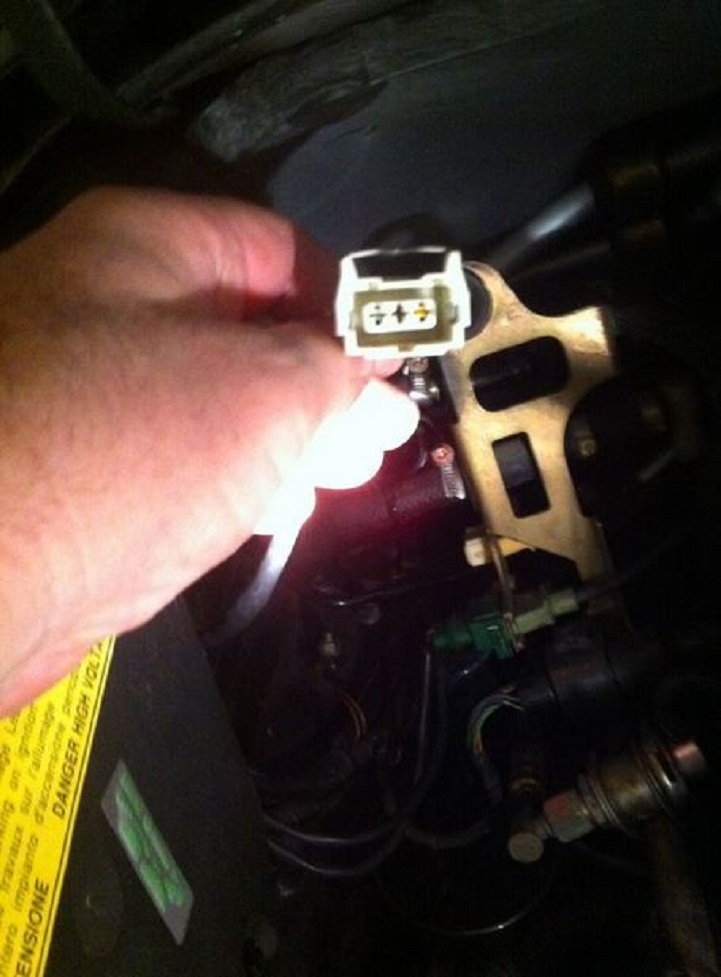
If a new CHT didn't solve the problem, check your fuel pump and fuel filter.
Step 4 – Replace the fuel pump and fuel filter
A dirty fuel filter can damage the pump which in turn will not create enough fuel for proper combustion.
- Disconnect your battery and do the job in a well-ventilated area.
- Either drain all the fuel possible or use vice grips with this rubber tubing over the ends to pinch off the supply line.
- Remove and replace the filter, check the fuel line for damage or leaks.
- Check and replace the fuel filter as well.
Related Articles
- Porsche 993: How to Replace Fuel Filter - Rennlist.com
- Porsche 993: How to Replace Fuel Pump - Rennlist.com
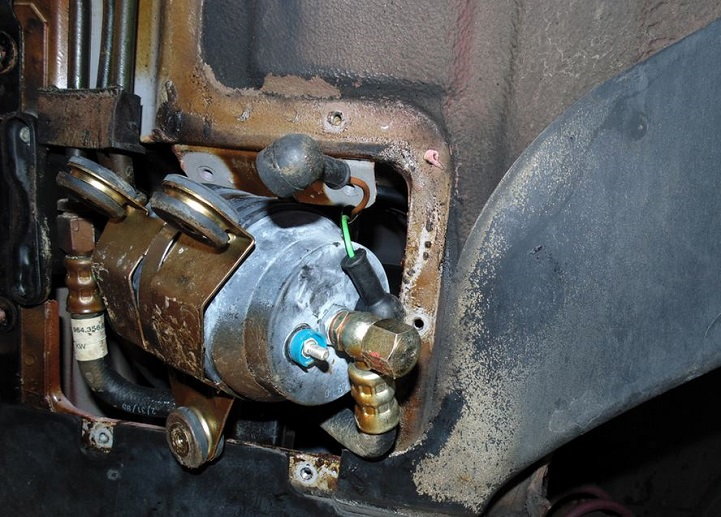
If the fuel pump didn't solve the problem, refer to the next steps, which start to get a little more complex.
Step 5 – Check for proper vacuum pressure
There are four vacuum lines and a "T" connector that could be bad or cracked.
A pressurized smoke test can be done on your 993 that will detect if there is a vacuum leak. You can see where any smoke is leaking from the engine bay and replace the hose in question. In many cases, the hoses are fine, but the "T" connector where they convene can be cracked, or one or more lines where they join could be kinked. This is a relatively simple fix, but the smoke test may be best done by a professional. As the smoke test is an expensive procedure, it is possible to use a vacuum with reverse capabilities and a home-made adapter to pressurize the air system. Attach it to the air-meter throttle assembly, spray the hoses with a water and soap mixture and look for bubbles.
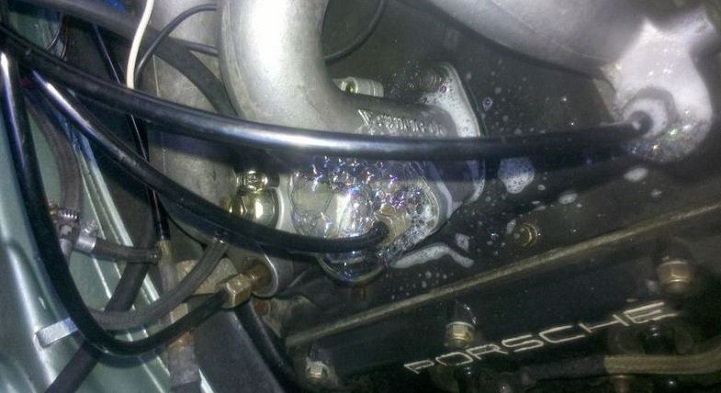
If the vacuum system checks out fine, move on to the more difficult step of checking the plugs, plug wires, coil packs and dizzy.
Step 6 – Check the plugs, wires, coil packs, dizzy and belts
The plugs themselves may be misfiring because they are bad, or the wires, coil packs or dizzy are bad.
- Check all the plug wires for evidence of arcing or cracks. Replace if anything odd is found. Use a high-quality replacement part.
- Remove the rubber boots from the coil packs.
- Remove the coil packs and check them over really well. If they haven't been changed, it's best to go ahead and replace them at this time anyway.
- Pull the plugs and check for lean or high temp burning conditions. Replace them in any event.
- Remove the dizzy caps and check the belts for looseness. This is a common problem that is often overlooked and will most definitely cause rough idle performance.
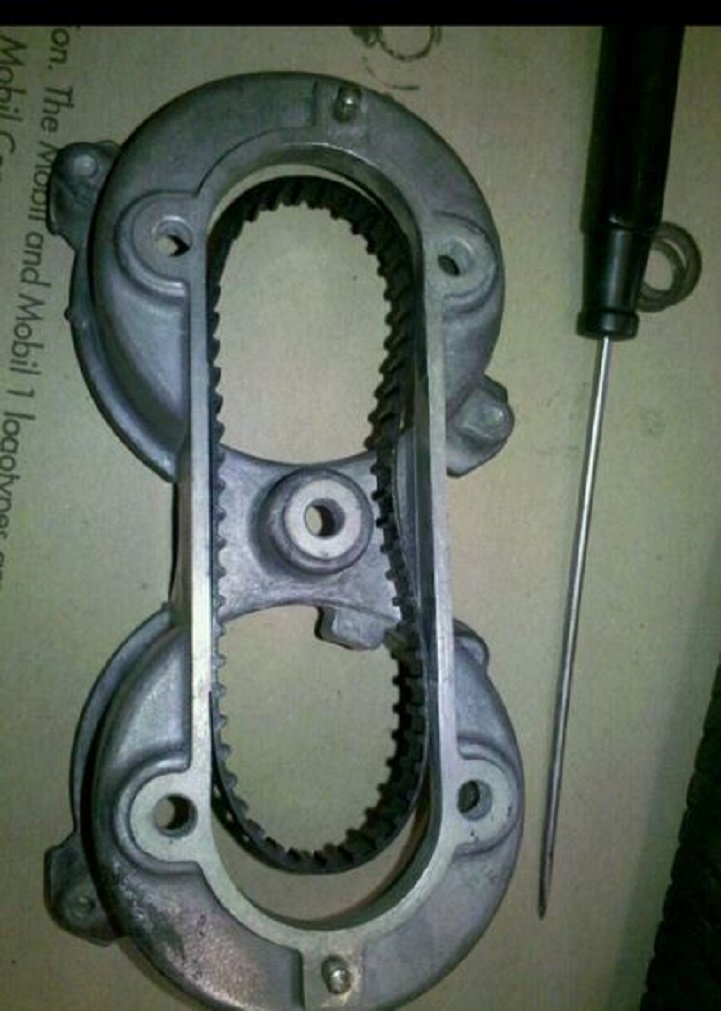
If the distributor belt is good, check the other belts.
Step 7 – Check the fan and alternator belts
The belts may be good, but if they are not specifically Porsche belts, they might not be good enough.
- Check that the fan and alternator are genuine Porsche belts.
- They may say OEM, but if they do not say Porsche, replace them anyway.
- For many 993 owners, they have found that any other belt, even those that say they are OEM belts, just do not deliver the proper performance.
(Related Article: Porsche 993: How to Replace V Belts - Rennlist.com)
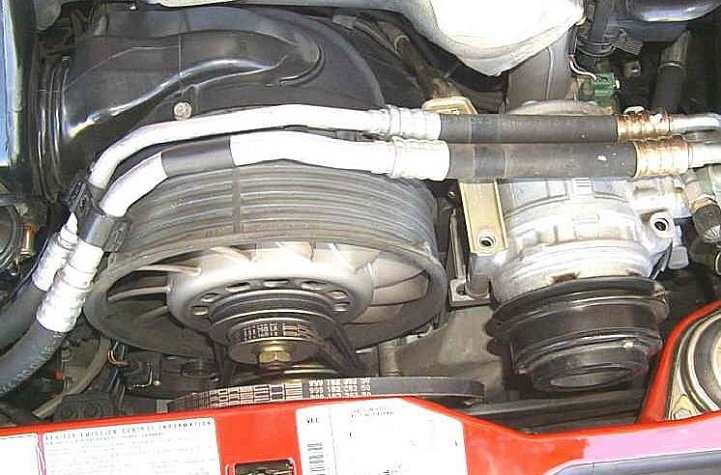
If your belts are genuine Porsche and in good condition, the final step is the last option before a top end rebuild.
Step 8 – Clean the ISV and MF sensor and change out the DME
The idle stabilizer valve may be clogged; the MF sensor and DME may be bad.
- Use a Phillips head screwdriver to remove the ISV and clean it out with carb cleaner. This is a fairly straight forward and easy job to do.
- The MF sensor could be the likely culprit; that is a fairly easy change as well.
- The DME is one of the more "popular" culprits as indicated from many 993 owners. In many cases, the ISV and MF combined with the DME caused the issues and were worked altogether.
- Cleaning and replacing these three items in one step solved many of these problems.
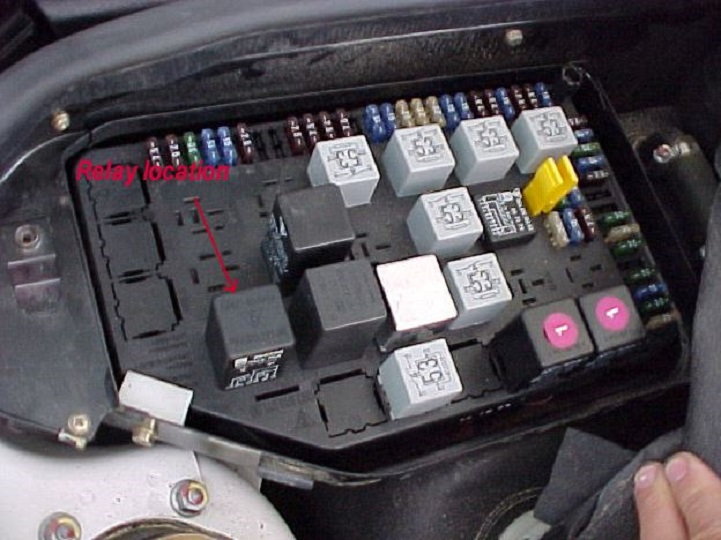
If you are still having problems, then your 993 is likely due for a top-end rebuild, or removing the engine to replace the clutch kit and dual mass flywheel. These are jobs that may be best left to a professional mechanic.
Related Discussions and Sites
- HELP! 993 Idle Problem - Rennlist.com
- Dual Distributor Belt Replacement - P-car.com
- 95 993 Rough Idle and Power Loss - Rennlist.com
- Rough Idle on Cold Start - Rennlist.com
- Porsche 993 Irregular Revving - Rennlist.com
- 993 ISV Cleaning - Pcarworkshop.com
- Finding CIS Vacuum Leaks - Pelicanparts.com




